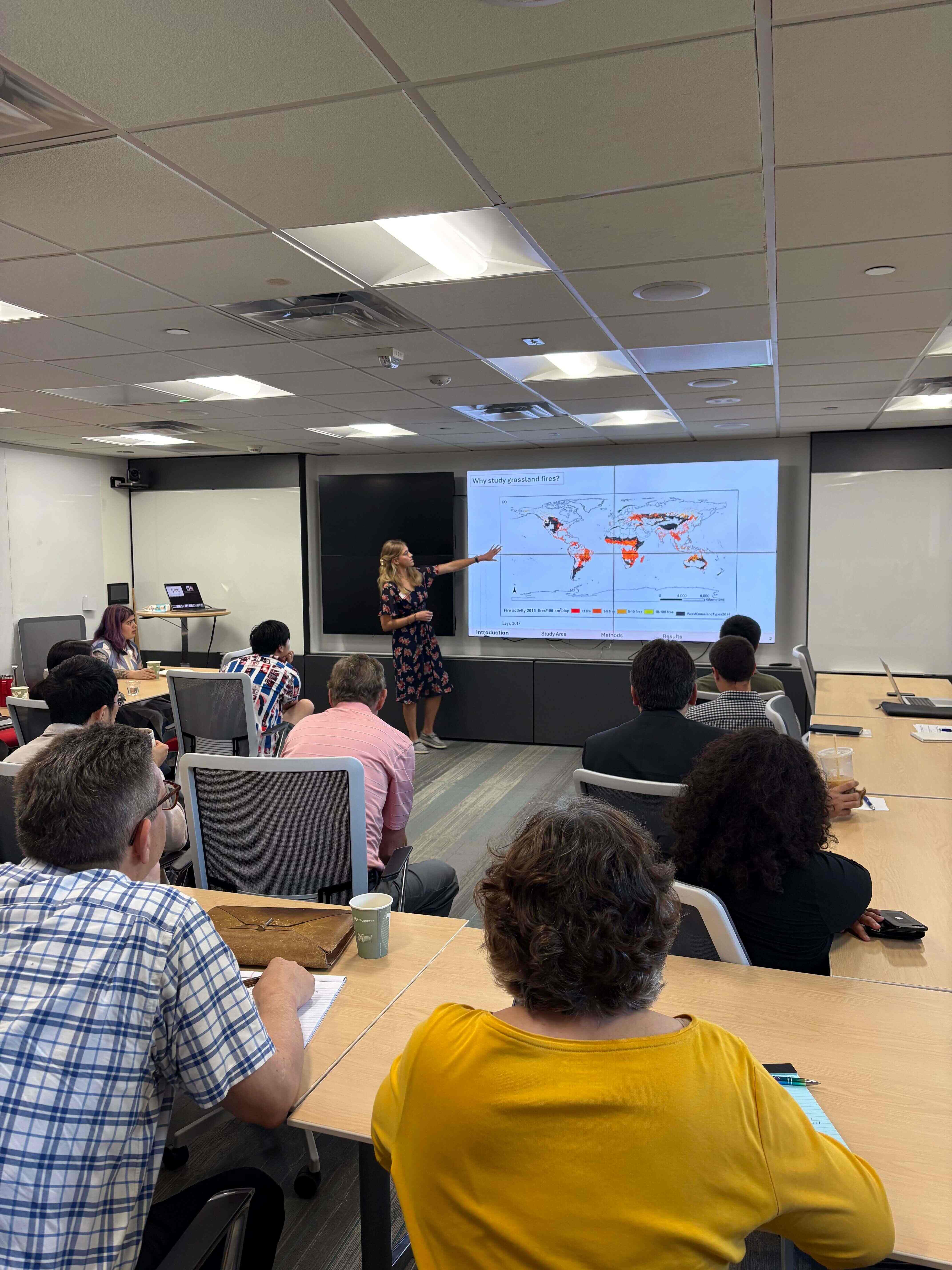The University of Houston’s Department of Earth and Atmospheric Sciences (EAS) celebrated student innovation and scientific inquiry at the 38th Annual Student Research Conference (SRC) on May 8th in the Science and Research Building 1 (SR1) on campus.
This year’s conference was the largest to date, featuring a record total of 58 student projects, spanning topics such as energy geoscience, hydrology, geochemistry, environmental sustainability, and more. Students presented their findings to peers, professors, and professionals, turning SR1’s hallways into a dynamic hub of ideas and exploration.
Dr. Paul Mann, professor of geology and faculty coordinator of the event, noted how the conference continues to serve as a crucial platform for student development.
“This conference provides a great opportunity for students to showcase their outstanding research and build deeper connections with faculty, alumni, and industry leaders,” said Dr. Mann. “It’s also very exciting to see a record number of student talks and posters for this year's SRC.”
For many attendees, the poster session was the highlight of the day, allowing for a hands-on, interactive exchange where students explained their work, answered questions, and gained valuable feedback from faculty and visiting professionals alike.
Among those presenting was Kennedy Potter, a senior geology major, who shared her research on how organic matter within lakes and arid regions gets trapped by incoming water and sediment, specifically focusing on Elephant Butte Reservoir in New Mexico.
Potter emphasized the broader environmental relevance of her research, noting that the natural process of organic carbon burial in reservoirs like Elephant Butte could contribute to climate mitigation strategies. By studying how plant material and other organic matter become trapped and preserved in sediment, researchers can better understand the potential for long-term carbon storage in man-made water bodies.
“This kind of organic carbon burial is essentially a natural form of carbon sequestration,” Potter noted. “If we can better understand and perhaps even enhance how reservoirs trap carbon over time, it could become a viable way to help offset greenhouse gas emissions.”
The SRC continues to be a cornerstone event for the EAS department, providing a stage for scientific achievement and a space for mentorship, networking, and community building. With record participation, this year’s SRC highlighted not only what students are discovering about the Earth, but also how they’re shaping the future of environmental science, sustainability, and climate resilience.
